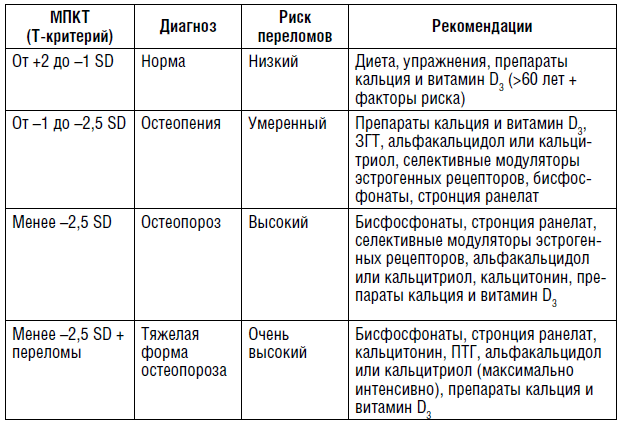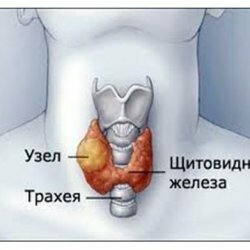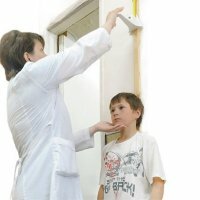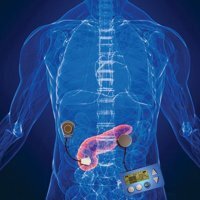Osteoporosis - symptoms and treatment
The bones are constantly updated. Old structures are destroyed by osteoclasts, and young ones are created by osteoblasts. The body exchanges mineral salts between skeletal tissues and blood. Normally, the processes of destruction and washing out of calcium are completely balanced by the processes of recovery. If for some reason the balance is disturbed, the mineral density of the bones falls and there is a high risk of fractures. This painful condition is called osteoporosis.

Fig.1 - Normal bone density and osteoporosis.
Contents
- 1 Prevalence in men
- 2 Causes of the disease
- 3 Symptoms of osteoporosis
- 4 Diagnosis of the disease
- 4.1 Densitometry
- 4.2 Laboratory tests
- 5 Treatment and prevention of osteoporosis
Prevalence in men
Both low bone mineral density and fractures for this reason are in men 2-3 times less often than in women. Nevertheless, osteoporosis is widespread enough among the stronger sex.
In Russia, among men over the age of 50, about a quarter have signs of a decrease in strength of bones. Such data can be obtained with the use of special diagnostic tools( densitometry).
Clinical manifestations of the disease are far from every patient. But according to the anamnesis in 13% of cases, men of this age had at least 1 fracture.
According to epidemiological studies in this group, the annual frequency:
- femur fracture in the cervical region - 79 per 100 thousand;
- fracture of radius in a typical place - 201 per 100 thousand;
- vertebral fractures - more than 500 per 100 thousand.
The incidence of osteoporosis in our country, as well as all over the world, is progressively increasing. Negative dynamics are particularly noticeable in countries with a high percentage of the urban population. The rates for men generally worsen even faster than women.
Causes of the disease
Osteoporosis is a systemic disease. It affects all bones of the skeleton, although clinically it is usually manifested only by fractures of the hip, forearm and vertebrae.
At the heart of the disease is the loss of hard tissues of mineral salts. Because of this, the bones become brittle and are injured even with minimal mechanical impact. The cause of a fracture in osteoporosis may be a fall from the height of its own growth or a sharp movement in the joint.
The causes of osteoporosis are composed of heredity and unfavorable environmental conditions. Genetic predisposition to the disease can be traced among relatives. If someone in the family has a fracture in old age, the risk of osteoporosis is considered high.
Other risk factors for men:
- age over 65;
- belonging to the Europoid race;
- body mass index less than 20 kg / m3;
- smoking;
- alcoholism;
- low physical activity;
- lack of calcium and vitamin D in the diet;
- reception of glucocorticoids more than 3 months;
- low level of androgens( hypogonadism);
- high risk of falls( poor vision, vestibular disorders, dementia, etc.).
Some of the causes of osteoporosis can be eliminated, others can not be corrected. If a man has several risk factors for the disease, the probability of fractures increases dramatically.
Table 1 - Recommended rates of calcium intake in persons of different sex and age.

Symptoms of Osteoporosis
Reducing the strength of the bones of the skeleton can remain undetectable for a long time. In such cases, osteoporosis is established only after densitometry or after the fracture.
In relatively early stages, osteoporosis helps to suspect characteristic symptoms.
Probably, the disease is a man:
- if his growth was less by 2 cm in 1 year( or 4 cm in a few years);
- if he has an increase in thoracic kyphosis( stoop);
- if he has vertebral fractures with minimal trauma.

Fig.2 - Saddle - one of the signs of osteoporosis.
Indirectly on osteoporosis indicate:
- aching pain in the back;
- change of gait;
- decrease in the amplitude of movements in the shoulder and hip joints;
- reduced endurance.
The most typical localization sites:
- proximal femur;
- distal radius section;
- thoracic vertebrae;
- lumbar vertebrae.
Fractures in osteoporosis occur due to increased brittleness of hard tissues. Damage can result in minimal external impact. For example, vertebral fracture sometimes happens simply when the position of the body changes.
Diagnosis of the disease
To determine the presence of osteoporosis doctors take into account complaints, clinical situation, laboratory and instrumental research data.
Densitometry
The absence of complaints does not always indicate a good condition of the bones of the skeleton. The most accurate diagnosis for osteoporosis is densitometry .On simple X-ray images, you can also see a decrease in bone density, but this technology is not very sensitive. By such a picture, one can see only pronounced osteoporosis with loss of more than a third of the mineral density.
Densitometry relies on different imaging techniques.
Allocate:
- X-ray dual energy absorptiometry;
- ultrasonic( quantitative);
- magnetic resonance imaging( quantitative);
- computed tomography( quantitative).
Densitometry can detect even a small loss of bone mineral salts( decrease in density by 5% or more).The most accurate method is the x-ray dual-energy absorptiometry.
To diagnose the disease, determine the mineral density in the lumbar spine and in the proximal part of the thigh.
Indications for the study:
- males of advanced age( over 70 years);
- history of a fracture with minimal trauma;
- presence of diseases reducing bone mineral density( for men over 60 years);
- a constant intake of glucocorticoids, thyroid hormones, immunosuppressants and some other drugs;
- control of the effectiveness of osteoporosis therapy.
The study is conducted at a frequency of 1 times per year. The mineral density of the patient's bones is compared with the average density in individuals of the same sex at a young age and peers. Based on the results, two criteria are evaluated:
- Z-criterion( number of standard deviations from the mean among people of the same age);
- T-test( the number of standard deviations from the average among the thirties).
Experts recommend diagnosing osteoporosis in men with a T-score less than -2.5.
The results of densitometry also reflect the absolute value of bone mineral density. This value must be compared with previous and subsequent results of the patient.
In this case:
- decrease in density by 2-3% or more is considered a deterioration;
- increase in density by 2-3% or more is considered an improvement;
- difference of less than 2% is considered insignificant.
Laboratory tests
In addition to densitometry, laboratory tests are used to diagnose osteoporosis. In modern conditions, it is possible to perform tests for bone markers, indicating the rate of mineral metabolism. But from the point of view of evidence-based medicine, all these tests in men are ineffective. Representatives of the stronger sex should donate blood only to the level of calcium and phosphorus( for the selection of treatment).Also, hormonal studies( testosterone, thyrotropin, parathyroid hormone, cortisol) may be required for suspected endocrine diseases.
Treatment and prevention of osteoporosis
Prevention of osteoporosis in men should be carried out from childhood. Great value for bone mineral density in the elderly has a diet and exercise in youth.
To reduce the risk of fractures, it is recommended:
- rejection of bad habits;
- balanced nutrition( 1000-1500 mg of calcium per day);
- stay outside on sunny days;
- moderate physical activity.
Calcium content in food:
( approximate availability of 100 g)

If low bone mineral density is already diagnosed, men are given strength training, aerobics, exercises from the initial standing position and walking. All exercise programs are developed taking into account age and concomitant diseases. Also, men are recommended to undergo special training. Educational programs improve adherence of patients to treatment.
Treatment of osteoporosis includes medication.
Therapy may include:
- bisphosphonates;
- calcitonin;
- parathyroid hormone;Fluoride salts
- ;
- active metabolites of vitamin D;
- is an ossein-hydroxyapatite complex;
- anabolic steroids;
- strontium salts, etc.
With low bone mineral density in men, nitrogen-containing bisphosphonates( alendronate, zoledronic acid) are primarily prescribed. These drugs are the first line. In addition, strontium ranelate can also be used. If such treatment is not effective or poorly tolerated, then the patient may be recommended calcitonin. This drug is especially good for patients with pain due to vertebral fractures.
Table 2 - Recommendations for the prevention and treatment of osteoporosis.

Treatment of osteoporosis is assigned taking into account individual data. Therapy is always long( at least 3-5 years).Efficiency is assessed by bone mineral density and by the occurrence of new fractures.
Doctor-endocrinologist Tsvetkova IG
Recommended for viewing:
Comments on the article( 1)



